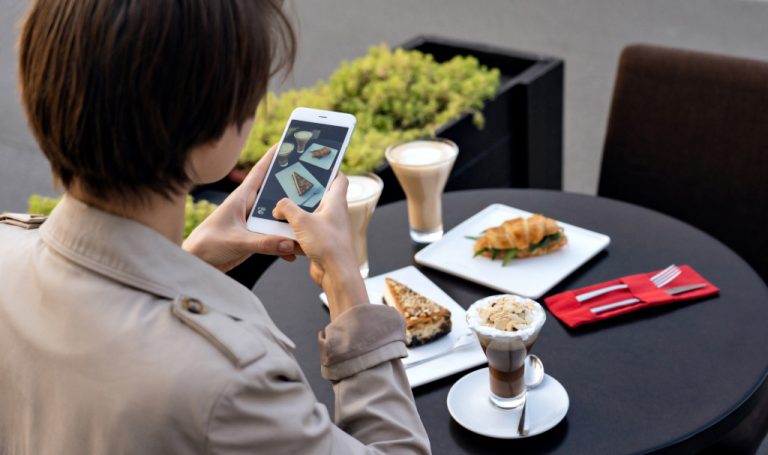- Food influencers build communities through websites and social media, expanding their reach through strategic advertisements.
- Community engagement includes ethnographic research, collaboration with fellow influencers, and hosting in-person events.
- Flexibility and adaptability are crucial for influencers due to the dynamic nature of social media platforms and evolving audience tastes.
- Food influencers foster meaningful connections through shared culinary experiences, transcending cultural and geographical borders.
Food is one of the most universal human experiences. It’s been said that food is the universal language that brings people from different cultures together. It’s a fact that one of the most exciting activities people all over the world can participate in is experimenting with different cuisines. With the rise of social media, platforms such as Instagram, Pinterest, and Tiktok offer a way for food enthusiasts to connect with others and share their love for impeccably plated food, exotic spices, and unique flavor combinations. This blog will explore how food influencers are forging meaningful communities through their shared common love for cuisine.
Best Practices in Building a Food Community
First things first, it’s vital to have the necessary tools to build a strong and meaningful community of food enthusiasts. Many food influencers establish their communities through the following:
Websites as Platforms for Food Influencers
Websites serve as an ideal platform for food influencers to share their recipes, culinary experiences, and cooking tips. They enable influencers to build their own space, free from the constraints of the character limits or posting algorithms found on social media platforms. With a personal website, influencers can create a comprehensive catalog of their culinary adventures, attracting a dedicated audience of fellow food enthusiasts.
Social Media: A Crucial Tool for Community Formation
Arguably, the heartbeat of any food influencer’s reach is social media. Platforms such as Instagram, Pinterest, TikTok, and Facebook allow influencers to share visually appealing images and videos of their culinary creations, thus capturing the attention of millions. In addition, these platforms enable real-time interaction, allowing food influencers to foster a sense of community amongst their followers.
Advertisements: Expanding Reach and Building Brand Partnerships
Advertisements play a critical role in amplifying a food influencer’s visibility. Strategic advertisement placements on various digital platforms can help attract new followers, thus expanding the influencer’s community. Moreover, advertisements often lead to lucrative partnerships with food brands, which can further cement the influencer’s presence in the culinary world.

Engaging With Your Food Community
Beyond the technical aspects, community engagement is key in growing the community as well. Food influencers must participate in conversation threads, engage with community members and welcome their feedback on the shared content. It’s the goal of these food influencers to create more than just a following but an inclusive community rich in conversation, exchange, and social support. Here are some tips:
Using Ethnographic Research:
Engaging with the community requires efficient ethnographic research. Food influencers must be aware of the cultural context within their platform and tailor content to meet these needs. Researching topics such as lifestyle practices, interests, demographic backgrounds, etc., helps create an understanding of the community’s values and preferences. This information can then be used to guide efforts in developing authentic content that resonates with the food enthusiast community.
Working With Other Food Influencers
One of the most significant advantages of communities is that networking and collaborating becomes possible. In many cases, food influencers can work together to organize events, challenges, and content collaborations. In doing so, they can increase their reach, build new relationships and forge alliances as well as strengthen their existing bonds.
Hosting In-Person Events
In many cases, organizing in-person events such as cooking classes, farm tours, and dinner parties can help take the online community offline and create genuine relationships forged over a plate of food. These events are an opportunity for community members to connect over a shared interest, learn from each other, and create more meaningful connections that go beyond online interactions.

Be Flexible and Adaptive
In the dynamic world of food influencing, flexibility and adaptability are key. Influencers should stay aware of new trends, tools, and platforms that could help them engage their community more effectively.
Sudden changes in social media algorithms, for instance, may require shifts in posting schedules or content types. Influencers must be ready to pivot and adapt their strategies to continue successfully engaging their followers.
Lastly, it’s important to respect the evolving tastes and preferences of the food community. A successful food influencer is one who listens to their audience, gauges their reactions, and tailors future content to match their evolving interests and expectations.
Food influencers play a significant role in creating and fostering connected communities through their shared love of food. By building these communities through engaging content and meaningful interaction, they can create opportunities for people to gather, connect, share experiences, and strengthen the bonds that food, culture, and sharing bring. Whether it’s online or in-person, food is a powerful tool that brings people together, creating a sense of community that transcends cultural and geographical borders. So, while food is, in a sense, a universal language, it’s the food influencers who use that language to spark conversations, bring people together, and meaningfully connect over their shared love for all things food.













